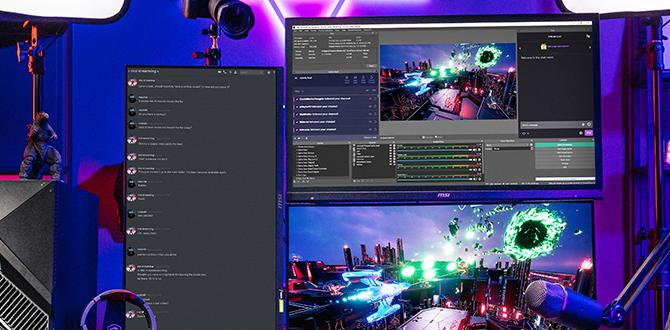Quick Summary: Achieve Chatter-Free Delrin Machining with a 1/8″ Carbide End Mill and 3/8″ Long Reach Shank.
Hey there, fellow makers and machinists! Daniel Bates here from Lathe Hub. Ever tried cutting Delrin and ended up with a noisy, vibrating mess? Chatter can turn a smooth operation into a frustrating headache, especially with plastics like Delrin. It’s a common challenge, but thankfully, it has a clear solution. We’re going to walk through exactly how to pick and use the right tool, specifically focusing on a 1/8-inch carbide end mill with a 3/8-inch shank. Stick around, and by the end of this guide, you’ll be cutting Delrin like a pro.
Mastering Delrin Machining: Why Chatter Happens and How to Stop It
Delrin (also known as Acetal or POM) is a fantastic engineering plastic. It’s strong, slick, and easy to machine for many applications. However, it also has a tendency to get a bit… vocal, shall we say? That annoying buzzing or ringing sound you hear during a cut? That’s chatter. It’s caused by vibrations between the cutting tool, the workpiece, and the machine itself.
Chatter is more than just annoying; it can ruin your parts. It leads to poor surface finish, inaccurate dimensions, and can even damage your cutting tools and machine. For beginners, it’s a sign that something isn’t quite right, and it can be pretty disheartening. But don’t worry! A lot of times, chatter comes down to choosing the right tool and setting up your machine correctly.
Today, we’re diving deep into one very specific, yet incredibly effective, solution: using a 1/8 inch carbide end mill with a 3/8 inch shank, specifically designed for plastics and featuring a long reach. This combination isn’t random; each element plays a crucial role in taming Delrin and achieving those smooth, clean cuts you’re aiming for. We’ll break down why this setup works, how to select the best one, and the key settings you need to get right.
The Power Trio: Understanding Your Tool’s Components
Before we get into the “how-to,” let’s quickly understand what we’re talking about. When we say “1/8 inch carbide end mill with a 3/8 inch shank and long reach,” what does each part mean for our Delrin cutting mission?
Carbide End Mill: This is your cutting tool. Carbide is a super-hard material, much harder than High-Speed Steel (HSS). This means it stays sharp longer and can handle higher cutting speeds. For Delrin, carbide is excellent because it cuts cleanly and efficiently.
1/8 inch Cutting Diameter: This refers to the actual width of the cutting flutes on the end of the mill. It determines the size of the slot or feature you can cut.
3/8 inch Shank Diameter: This is the diameter of the part of the tool that goes into your milling machine’s collet or tool holder. A larger shank, like 3/8 inch compared to say, 1/4 inch, offers more rigidity. This extra stiffness is crucial for reducing vibrations.
Long Reach: This means the end mill has an extended flute length. It allows you to cut deeper into a workpiece or machine into features that are farther from your machine’s spindle. For certain operations, this extra reach can be beneficial, but it also introduces more potential for flex.
So, why this specific combination for Delrin and chatter reduction? Think of it like this: Delrin can be a bit “gummy.” It likes to melt and stick if you cut too slowly or too aggressively. Chatter amplifies this by causing the tool to bounce, leading to inconsistent chips, heat buildup, and a rough finish. A rigid setup with the right geometry minimizes these issues.
Why a 1/8″ Carbide End Mill is Your Delrin Best Friend
A 1/8-inch end mill is a versatile size for many projects, especially when working with smaller parts or fine details common in plastic machining. For Delrin, a ~1/8″ size offers a good balance.
Precision: It allows for intricate cuts and detailed work, which is often the goal when machining plastics for prototypes or functional parts.
Chip Load Management: Smaller diameter tools generally require smaller chip loads (the amount of material removed by each cutting edge). This is important for plastics, as it helps prevent overheating and melting. With a 1/8″ end mill, you can control this easily.
Reduced Cutting Forces: Smaller tools exert less force on your machine. This can be beneficial for less rigid machines or when you want to avoid stressing delicate workpieces.
The Rigidity Factor: Why a 3/8″ Shank Matters
This is where a lot of the chatter-fighting power comes in. When you talk about a 3/8-inch shank versus a smaller one like 1/4 inch or 6mm, you’re talking about rigidity.
Less Flex: A wider shank means a stronger tool overall. When the cutting forces are applied, a thicker shank has less tendency to bend or deflect. This is like trying to bend a thin straw versus a sturdy marker; the marker resists bending much better.
Better Tool Holding: Most common milling machines have collet systems that are designed to hold larger shank diameters securely. A properly seated 3/8″ shank in a strong collet provides a very stable platform for cutting.
Vibration Dampening: When a tool deflects, it springs back, creating a vibration. A more rigid tool assembly (including the shank and holder) resists this deflection, effectively dampening the vibrations that cause chatter.
A study by the National Institute of Standards and Technology (NIST) highlights the critical role of tool rigidity in high-speed machining. While their research often focuses on metals, the principles of minimizing vibration through stiffer toolholding apply universally, including in plastic machining. A more rigid setup means less chance for that back-and-forth oscillation that leads to chatter.
The “Long Reach” Consideration for Delrin
The “long reach” aspect of an end mill means it has a longer flute length. This allows the cutting edges to extend further down the tool body.
Accessing Features: It’s great for cutting deeper pockets or reaching into areas that are far from the machine’s spindle.
Potential for Flex: However, the longer the tool extends from its holder, the more leverage there is for vibrations to build up. This is why the combination of a long reach end mill with a rigid 3/8″ shank is key. The thicker shank helps compensate for the increased length.
Material Considerations: For plastics like Delrin, a long reach can sometimes be beneficial if you need to make deep cuts in layers. The key is to manage the cutting parameters very carefully to avoid overwhelming the tool’s flexibility.
Choosing the Right 1/8″ Carbide End Mill for Delrin
Not all carbide end mills are created equal, especially when it comes to plastics. Here’s what to look for when selecting your 1/8″ 3/8″ shank long reach end mill for Delrin:
1. Flute Count: The Sweet Spot for Plastics
This is crucial for plastics.
1-Flute End Mills: Excellent for plastics. They provide good chip clearance, which is vital for preventing melting and chip recutting. They generally run at higher speeds than multi-flute mills.
2-Flute End Mills: Also a good option. They offer a reasonable balance of cutting action and chip clearance. They can be a bit more aggressive than 1-flute mills.
3-Flute or More: Generally not recommended for Delrin and most soft plastics. While great for metals, they tend to pack chips and generate too much heat in plastics, leading to melting and poor surface finish.
Recommendation for Delrin: Start with a 1-flute end mill. If you find you need a bit more material removal per pass (and your chip evacuation is good), a 2-flute can be tried, but 1-flute is often the safest bet for a chatter-free, clean cut.
2. Helix Angle: The Shape of the Cut
The helix angle is the angle of the flutes around the tool.
High Helix Angle (e.g., 35-45 degrees): These are often called “plastic” or “high-performance” end mills. They have a steeper twist.
Benefits: They shear the material more effectively, leading to a smoother finish and less built-up edge (material sticking to the tool). They also help evacuate chips upward.
For Delrin: Highly recommended. A higher helix angle is designed to cut “cleanly” like a sharp knife, which is exactly what you want for Delrin.
Low Helix Angle (e.g., 30 degrees or less): More common for general-purpose or harder materials.
Recommendation for Delrin: Look for end mills with a high helix angle (35-degree or greater), specifically marketed for plastics.
3. Coating: Protection and Performance
Coatings on end mills enhance their performance and lifespan.
Uncoated: Basic and workable, but will wear faster and may not perform as well in plastics.
ZrN (Zirconium Nitride): A good general-purpose coating that offers some hardness and reduces friction. Decent, but not ideal for plastics.
TiCN (Titanium Carbonitride): A harder, more wear-resistant coating. Can work, but might still cause some friction.
TiAlN (Titanium Aluminum Nitride): A very popular coating for high-temperature applications in metals. Can surprisingly work well for some plastics by reducing friction, BUT it can also be more prone to galling (sticking) than specialized coatings.
Proprietary Plastic Coatings (e.g., “Polished,” “Diamond-like Carbon” (DLC)): These are often the best bet. They are engineered to reduce friction to an absolute minimum and to prevent plastic from sticking to the tool. Look for descriptions like “polished flute,” “mirror finish,” or coatings specifically for non-ferrous materials or plastics.
Recommendation for Delrin: Aim for an end mill with a highly polished flute and/or a specialized plastic-friendly coating. This drastically reduces friction and prevents melting/sticking, which are major causes of chatter in plastics.
4. Material: Solid Carbide is King
For this application, solid carbide is the only choice. HSS would dull too quickly and generate too much heat with Delrin.
Example of a Suitable Tool
You’re looking for something like: “1/8″ Diameter, 3/8″ Shank, 1″ or 2″ Flute Length, High Helix (35°+), 1-Flute, Solid Carbide End Mill with Polished Flutes or Plastic Coating.” Always check the manufacturer’s recommendations for material compatibility.
Setting Up for Success: Machine and Workpiece
Once you have the right tool, the setup is the next critical piece of the puzzle.
1. Work Holding: Secure Your Delrin
Loose workholding is a primary cause of chatter, regardless of the material.
Clamping: Use appropriate clamps that won’t mar the surface of the Delrin. T-nuts, strap clamps, or specialized fixtures can all work. Ensure your clamps are positioned to avoid interfering with the cutting path.
Support: If you’re machining a large sheet of Delrin, ensure there’s adequate support underneath to prevent flexing. Using a spoilboard or sacrificial layer can help.
Cleanliness: Make sure the surface where you’re clamping the workpiece is clean and free of debris. This ensures a solid grip.
For precise work, consider using a sturdy vise with soft jaws if you’re machining smaller blocks. For larger sheets, bolting it down or using vacuum fixturing (if available) offers the most rigidity. Remember, any movement in the workpiece during cutting will translate into chatter.
2. Machine Rigidity: The Foundation
Even with the best tool, a wobbly machine will chatter.
Check for Play: Ensure your machine’s Z-axis, X-axis, and Y-axis have minimal play. Tighten gibs or adjust as needed.
Spindle Bearings: A healthy spindle with tight bearings is essential.
Tool Holder/Collet: Make sure your collet and collet nut are clean, the correct size for your shank, and that the end mill is seated fully and properly. A worn collet or one that isn’t tightened correctly is a direct invitation to chatter. For a 3/8″ shank, using a proper 3/8″ collet is crucial.
3. Cutter Compensation (Optional but Helpful)
For critical dimensions, you might use cutter radius compensation in your CAM software or G-code. However, for chatter reduction, focus on physical rigidity and cutting parameters first.
The Magic Numbers: Cutting Parameters for Delrin
This is where we translate the tool and setup into actual machine movements. Finding the “sweet spot” for cutting parameters is key to preventing Delrin from melting and keeping chatter at bay.
Key Parameters:
Spindle Speed (RPM): How fast the tool spins.
Feed Rate (IPM or mm/min): How fast the tool moves through the material. This is directly related to chip load.
Depth of Cut (DOC): How deep the tool cuts in a single pass.
Width of Cut (WOC): How much of the tool’s diameter is engaged with the material.
1. Spindle Speed (RPM)
Delrin machines best at relatively high spindle speeds. This allows the tool to cut quickly, creating small, manageable chips and minimizing heat buildup at the cutting edge.
Starting Point: For a 1/8″ carbide end mill in Delrin, start in the range of 15,000 – 25,000 RPM. For very small, delicate parts or machines that can’t quite reach these speeds, you might be in the 8,000 – 15,000 RPM range, but aim higher if possible.
Why High RPM? High speeds generate heat primarily in the chip being removed, not just at the tool’s cutting edge. This helps prevent melting and sticking.
2. Feed Rate (IPM) & Chip Load
Feed rate is often misunderstood. It’s not just about moving fast; it’s about controlling the size of the chip being removed by each cutting edge. This is called the “chip load.”
Chip Load Rule of Thumb: For a 1/8″ 1-flute carbide end mill in Delrin, aim for a chip load between 0.001″ and 0.003″ per flute.
Calculating Feed Rate: Feed Rate (IPM) = Spindle Speed (RPM) × Number of Flutes × Chip Load per Flute.
Example: Using a 1-flute end mill at 18,000 RPM with a 0.002″ chip load:
Feed Rate = 18,000 RPM × 1 flute × 0.002″ / flute = 36 IPM.
Adjusting for Chatter: If you experience chatter, try slightly increasing the feed rate (to take a fatter chip) or slightly decreasing it (to take a thinner chip). Often, a slightly fatter chip can be more stable if your machine can handle it and your chip evacuation is good, as it reduces the tool’s tendency to “bounce.” However, too fat a chip will cause melting. It’s a balance.
3. Depth of Cut (DOC)
For plastics like Delrin, shallow depths of cut are usually preferred to manage heat and vibration.
Starting Point: For a 1/8″ end mill, try a DOC of 0.06″ to 0.12″ (about 50% to 100% of the tool diameter).
Long Reach Consideration: If you are using a longer reach end mill, you may need to reduce the DOC even further to maintain rigidity and prevent flex. For deep cuts, you’ll likely need to take multiple shallow passes.
4. Width of Cut (WOC)
This is how far the side of the end mill engages the material.
Slotting (Full Width): If you are milling a slot that is exactly 1/8″ wide, your WOC is 1/8″. This puts the most stress on the tool.
Contouring (Partial Width): When cutting around a profile or pocket, use a partial WOC.
Starting Point: Aim for a WOC of 10% to 30% of the tool diameter (0.012″ to 0.036″ for a 1/8″ mill). This puts less side load on the tool and helps reduce chatter.
The “Stepover”: This is the distance the machine moves in the Z-axis in adaptive or pocketing toolpaths. A smaller stepover (like 10-30%) is generally better for plastics to avoid heating and chipping.
Putting It Together: A Sample Setup for 1/8″ End Mill in Delrin
Let’s assume you’re milling a pocket:
Tool: 1/8″ 1-flute carbide end mill, 3/8″ shank, high helix, polished.
Material: Delrin (Acetal/POM).
Spindle Speed: 18,000 RPM.
Chip Load: 0.002″ per flute.
Feed Rate: 3





